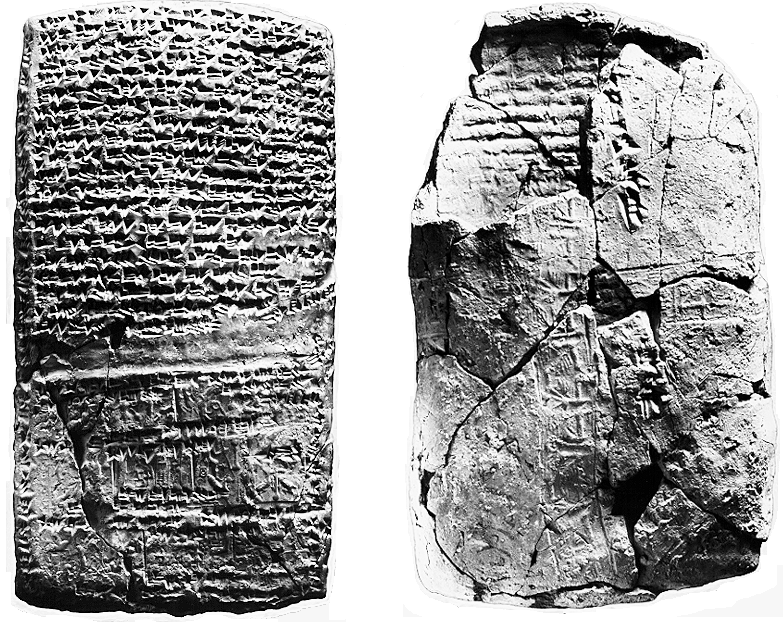Nuzi Archives
The beginnings of Mari around 1800 B.C. agree extremely well with the traditional dating of the Biblical patriarchs, somewhere around or shortly after 2000 B.C. Paradoxically it was the astonishing confirmation of statements in the Bible connecting the time of the patriarchs with a period of the history of the Ancient East some 500 years later which thus raised doubts concerning the customary dating. This confirmation comes from the archives of Nuzi in Yorgan Tepe, fifteen kilometres south west of Kirkuk. The written documents from this Horite city of the kingdom of Mitanni (c. 1500 B.C.) cast a light not only on the ancient laws of the Horites, but also on the legal practices of the Biblical patriarchs which agree to an amazing degree with the Biblical texts. Three examples will suffice as illustrations-
1. Abraham laments the fact that he will die without a son and that a certain Eliezer will inherit from him (Gen. 15-2). From the Nuzi tablets we know that it was customary for a childless couple to adopt a “son” who looked after his foster-parents and in return inherited from them. This arrangement could be reversed to a certain degree if an heir was subsequently born.
2. If a marriage remained childless, the wife had to provide a “substitute wife.” This is what Sarah did when she presented Hagar to Abraham (1. Gen. 16-2) and in the same way Rachel at a later time gave her husband Jacob her maid Bilhah (1. Gen. 30-3). The custom was precisely the same in Nuzi.
3. Jacob’s wife Rachel stole the “images” of her father Laban (1. Gen. 31-3 ff) and Laban moved heaven and earth to get these “images” back. The Nuzi tablets tell us why. The person who was in possession of these domestic images (teraphim) also had the rights to the inheritance.
Taken together there is a striking conformity between the Bible and the Nuzi texts. Yet there is a bitter conclusion to be drawn, for if the patriarchs followed the legal customs of the Horites of the 15th century before the birth of Christ, how could they have lived in the 18th, 19th or even the 20th century before Christ? In other words, did Abraham really live in the “kingdom of Mari”? Or ought we to look for him centuries later in the kingdom of Mitanni? In fact, we shall see that certain concepts of the “patriarchal period,” in the religious sphere this time, are matched by ideas contained in texts from the coastal town of Ugarit (Ras Shamra) whose “classical” period came still later, in the 15th to 14th centuries before Christ. Do we have, in consequence, to put Israel’s Biblical ancestors even later? The questions still facing us today are innumerable!
Werner Keller. The Bible as History. Bantam Books. New York. 1982. p.51-52.
See also-
- Biblical History- From Abraham to Moses, c. 1850-1200 BCE, Steven Feldman, COJS.
- The Patriarchal Age- Myth or History? Kenneth A. Kitchen, BAR 21-02, Mar-Apr 1995.
- The Stories of the Patriarchs (Genesis 12-36), Christine Hayes, Open Yale Courses (Transcription), 2006.
- Semitic Museum at Harvard University- Nuzi and the Hurrians




